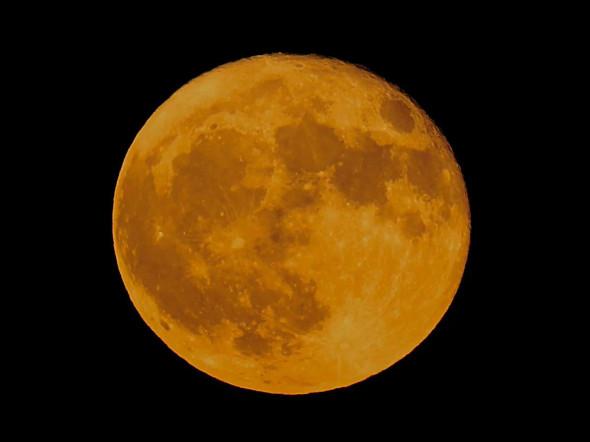What is a supermoon?
A supermoon is a non-scientific term used in astrology to describe the phenomenon when a full moon or new moon coincides with the point of closest approach of the Moon to Earth, known as perigee.
The term "supermoon" is a translation of the English "super moon," which was first used in 1979 in the American astrology magazine Dell Horoscope. However, scientists do not have a consensus on whether a supermoon actually represents the moment of closest proximity between the Moon and Earth. Astrologer Richard Nolle, who coined the term "supermoon," uses a distance criterion of 368.6 thousand kilometers between celestial bodies, while some astronomical publications use figures of 358–360 thousand kilometers.
From a scientific perspective, discussing large or small supermoons is intriguing because an average person finds it challenging to notice the difference between a regular full moon and a full moon during a supermoon. However, the brightness of a supermoon can be 15–30% greater.
Types of supermoons
Astronomers consider supermoons to be a common occurrence. Nonetheless, this phenomenon and the full moon have always intrigued people and continue to do so. There are many different phases of the Moon:
sturgeon moon — the first full moon of August, considered the perfect time for catching sturgeon in the Great Lakes, according to Native Americans;
thunder moon — the full moon in July;
blood moon — a full moon that coincides with a total lunar eclipse, giving the Moon a reddish hue;
blue moon — the second full moon in a calendar month. This phenomenon is the basis for the English expression "once in a blue moon," which means "rarely."

When will the supermoon occur?
Despite discussions about what can be scientifically considered a supermoon, in a broad sense, this event can be observed three to six times a year.
The cycle of supermoons lasts 413 days (one year, one month, and 18 days). Each supermoon lasts from three to four days.
The supermoon calendar for 2024 is as follows:
August 19;
September 18;
October 17;
November 16.
The largest supermoon of the 21st century will be observed on December 6, 2052. The last significant supermoon occurred on November 14, 2016, surpassing the event of January 26, 1948. It will remain the moment of closest approach between Earth and the Moon until November 25, 2034.
Does a supermoon affect humans?
Science has found no effects of supermoons on nature or humans. Supermoons cause higher tides, but the difference in tides during a regular full moon and a supermoon is only a few centimeters.
Researchers are confident that there is no correlation between supermoons and events such as earthquakes and tsunamis in the Indian Ocean in 2004 and in Japan in 2011, as well as earthquakes in New Zealand in 2016 and Iran in 2017.
"The influence of the Moon on earthquakes has been studied for a long time, but there is no correlation between major earthquakes and the Moon's position," stated American astronomer Phil Plait.
Science also denies any influence of supermoons on humans. Interest in the full moon and its effects on health dates back to ancient times. The oldest study on this topic was recorded on a clay tablet dating back to 172 BC and found in Mesopotamia.
Modern research has focused on the influence of lunar phases on sleep, mental disorders, and the menstrual cycle, but no effects have been identified. In 2013, Swiss scientists reported a connection between the full moon and sleep quality, but the results were not confirmed in subsequent studies.
However, in esotericism, this period of the lunar cycle is given special significance. Astrologers believe that a supermoon can disrupt emotional states, disturb sleep, but at the same time, inspire creativity in artistic individuals.